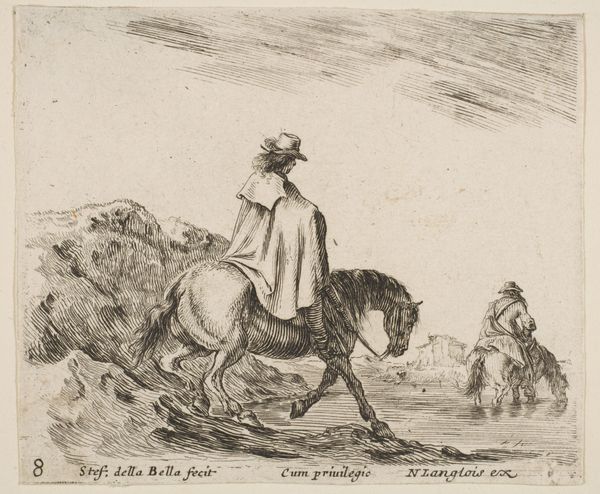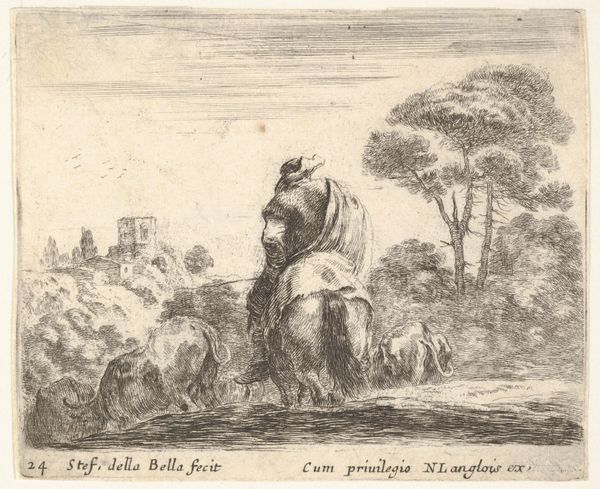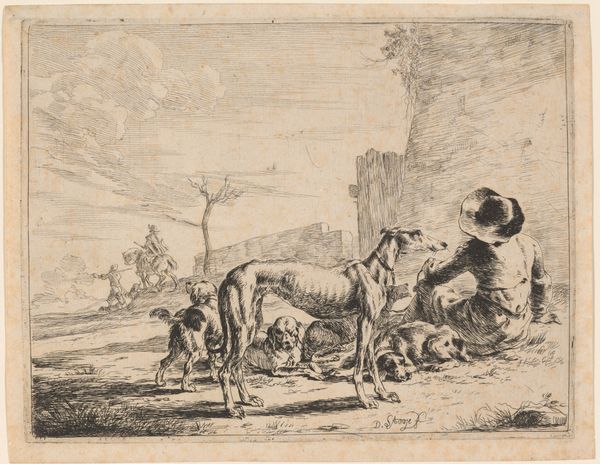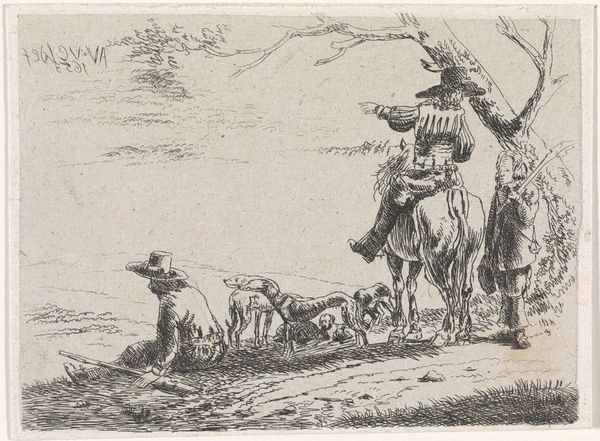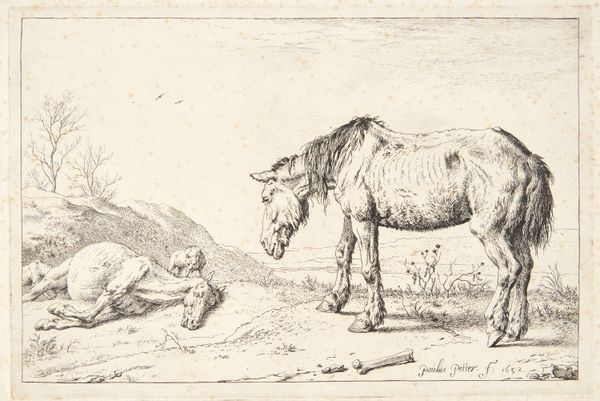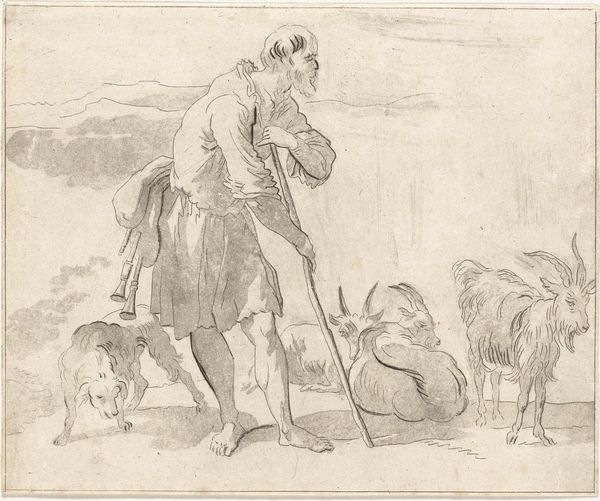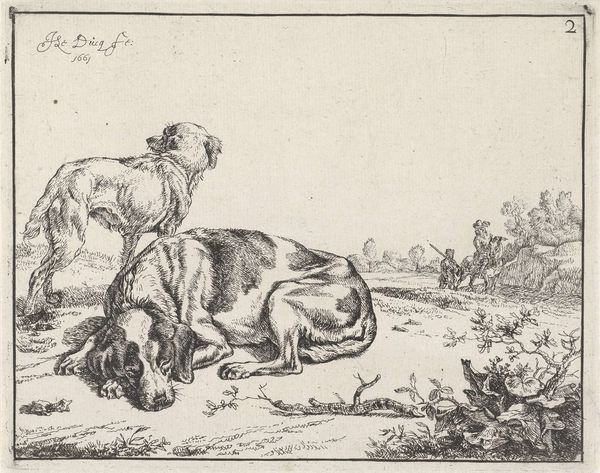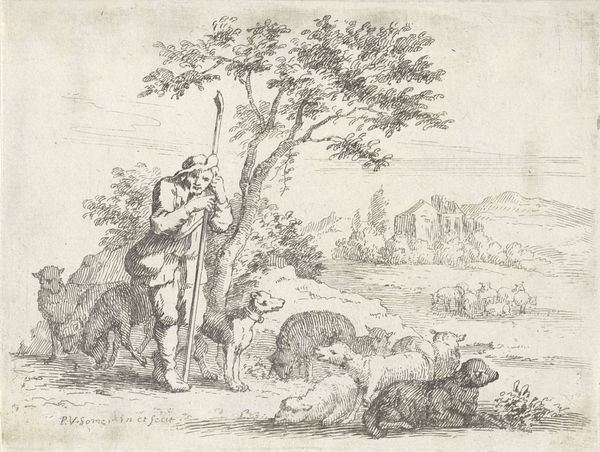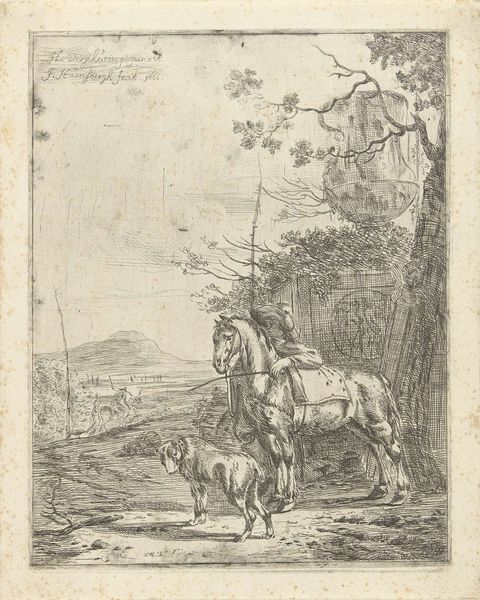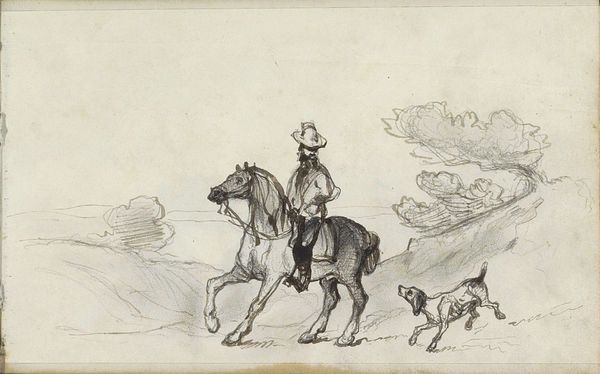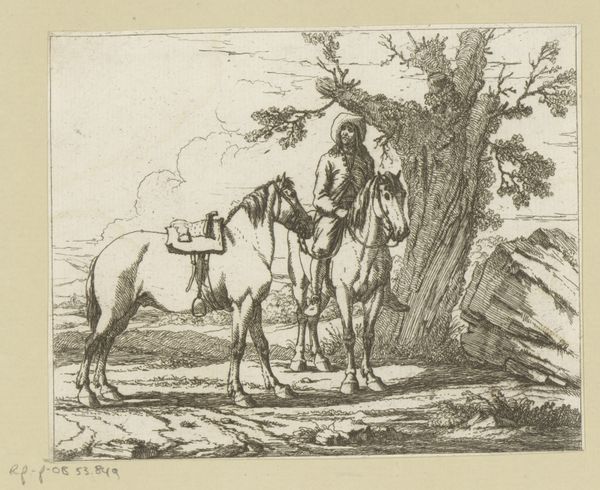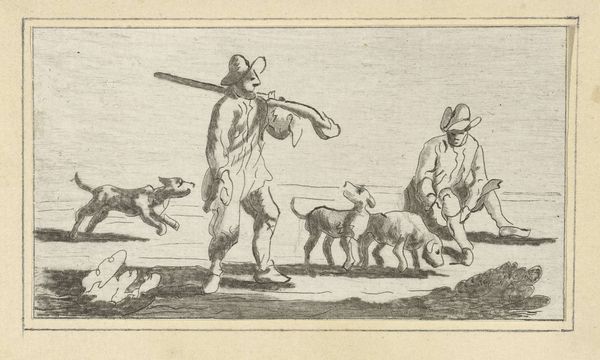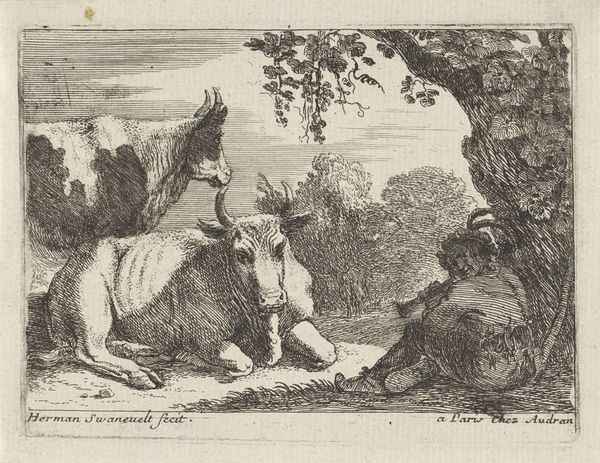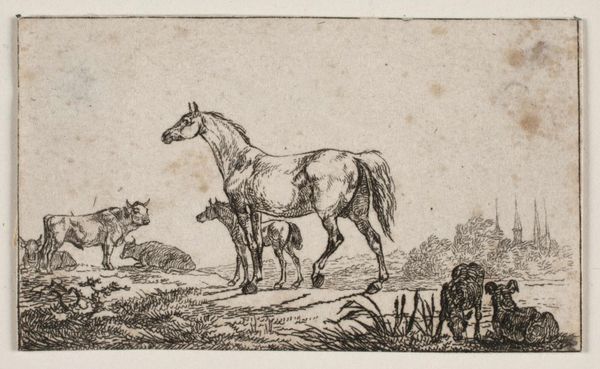
Plate 5: a barefoot peasant on horseback crossing a river, another peasant on horseback and leading a horse on a bank to right in the background, from 'Diversi capricci' 1639 - 1649
0:00
0:00
drawing, print, etching
#
drawing
#
baroque
# print
#
etching
#
landscape
#
river
#
figuration
#
pencil drawing
#
horse
Dimensions: Sheet: 3 1/8 × 3 7/8 in. (8 × 9.9 cm)
Copyright: Public Domain
Editor: This etching by Stefano della Bella, made sometime between 1639 and 1649, depicts peasants on horseback. It has a really relaxed, almost casual feeling. What do you make of the way he represents these figures and their relationship to the landscape? Curator: This image, like much of della Bella’s work, gives us a window into the social hierarchies of 17th-century Europe. Notice the contrast: the supposed idyllic scene of rural life is undercut by the clear markers of labor and class. The barefoot peasant suggests a very specific social standing, doesn't it? Editor: It does, but I guess I hadn't really considered it that way. I was more focused on the naturalism of the scene. Curator: Exactly! But naturalism itself is a construct. Della Bella wasn't just showing "life"; he was curating a vision of it that served particular ideological purposes. How does this seemingly simple scene reinforce, or perhaps even subtly critique, existing power structures of the time? Editor: I see what you mean. The "naturalness" hides the social reality. It makes me wonder what a contemporary artist would do with the same subject matter. Curator: Precisely! By examining the historical context and the artist's choices, we can begin to unpack the complex relationship between art, power, and representation, even in what appears to be a simple landscape. Editor: I never would have looked at it that way, I will definitely keep your questions in mind when thinking about the other artworks in the museum. Curator: Likewise. The exchange reminds me how important it is to look critically at the world.
Comments
No comments
Be the first to comment and join the conversation on the ultimate creative platform.
